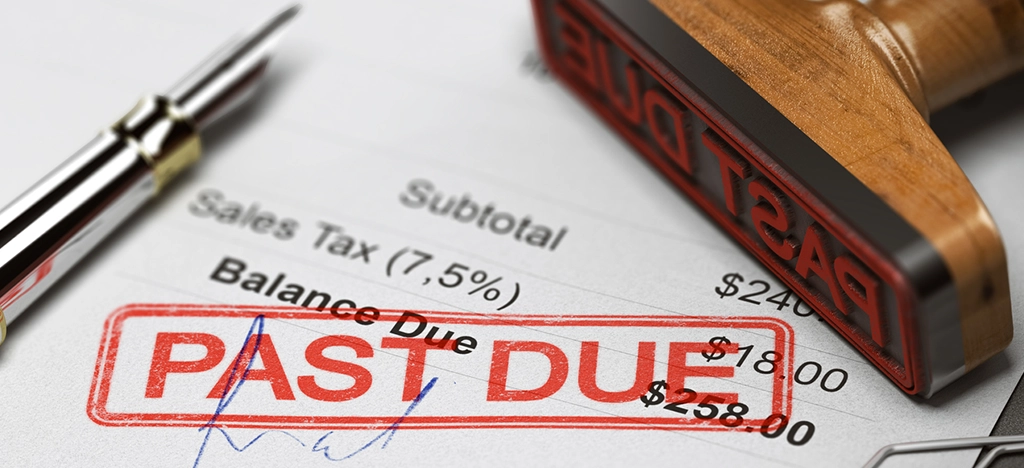Effective patient revenue collection is essential for the success of a healthcare practice. We share 4 strategies to implement today to improve your practice's cash flow.
The increasing healthcare costs in the United States have left consumers feeling financially overwhelmed and confused. High deductible health insurance policies, copays, and private payments have resulted in healthcare consumerism, which involves streamlining healthcare systems to make them efficient and effective by giving consumers purchasing power. While that's good news, various factors may lead to incomplete payments. For example, a patient's credit card might be declined; they might be unable to cover the costs and face health insurance issues. That leaves healthcare practices less control over revenue collection processes and outcomes.
For healthcare systems, patient receivables contribute 30% of provider revenue, yet many medical facilities collect only 60% of copays. The rest tends to disappear or be pushed to collections, which generally only recovers 21% of the remaining revenue. Because of increased costs, patients skip payments more often or may skip treatment altogether. To a provider, that can lead to bad debt, decreased patient volume, and overall losses for the healthcare practice.
Therefore, providers must modify their collection techniques to meet consumer needs to achieve the desired bottom line and optimize their revenue cycle management (RCM) strategies.
The Importance of Patient Revenue Collection

The goal of patient revenue collection is to boost provider revenue for the benefit of the patient. Timely and accurate payment collections are crucial for any healthcare provider, as it alleviates patient fraud and increases revenue while decreasing the time taken to handle administrative tasks.
Even so, payment delays, particularly from insurance companies, significantly hurt revenue, cash flow, operation efficiency, and costs. A study by Crowe CRA: “It's Not Just Denials – It's Delays: Delayed Payments for Clinical Services a Drag on Hospital Cash Flow,” captured patient transactions in over 850 healthcare facilities with a deep focus on denials.
According to the report, final denials (when payment is entirely denied) account for a nearly 2% decrease in the average annual revenue for healthcare facilities. Additionally, delayed payments on previously denied claims negatively impact cash flow, requiring an average of 16.4 more days to pay than claims that haven't been denied. These delays also affect a practice's bottom line because the expenses and cash flow issues suffered during the additional 16 days are equivalent to at least 1% of a facility's cost structure.
With increasing insurance payment delays, effective patient payment collections become more vital than ever—especially as financial responsibility continues to climb. Today's American healthcare consumer pays nearly 50% of medical expenses out of pocket.
4 Easy Steps for Improving Patient Revenue Collection
The following are four (4) easy steps to help you improve your patient revenue collections.
1. Estimate Patient Financial Responsibility
Medical bills often confuse patients, particularly if they are delivered weeks after treatment or contain overwhelming medical jargon. Consumers usually find it challenging to understand the information in medical bills, including the amount owed, who to pay it to, how to pay it, and the payment deadline. The confusion increases when they receive an Explanation of Benefits (EOB) report from their insurer because the two documents look identical.
To help patients navigate the financial maze, medical practices must clearly explain a patient's financial responsibility in the medical bill, including the services and costs. Additionally, they must ensure they deliver statements on time and minimize the paperwork sent to a patient regarding a single transaction.
How Technology Can Help
Your hospital or medical practice should be able to accelerate patient receivables by integrating automation technology into their revenue collection systems. Patients like to know exactly what their treatment will cost before receiving it, which helps them make the best clinical and financial decisions. On the other hand, calling an insurance company for the relevant information to prepare a medical bill takes time.
A patient estimation tool can accurately determine a patient's financial responsibility before providing care services. It saves time, alleviates manual work, and ensures you get paid faster, significantly increasing your point-of-service patient collections.
For example, BillFlash is a healthcare billing, collection, and payments platform with a free Pre-Visit billing tool that eliminates the need and cost associated with the billing process and the headache of collecting payments after an encounter. With BillFlash, you can easily collect a patient's financial obligation by sending them a link with the pre-visit bill, which they can quickly pay online.
2. Collect Payment Upfront

As mentioned earlier, high healthcare costs have turned the traditional RCM model on its head. Patients now shoulder the larger financial responsibility for healthcare services, with less being covered by insurance. Instead of billing your patient as you would a contracted insurer, engage your patients as consumers early in the healthcare delivery process by collecting payments upfront.
On average, self-pay patients only pay 10% of their total medical bills. However, studies show that providers can increase their collections by 60% when the costs are provided upfront, with no surprises. You can alleviate unexpected events by creating point-of-sale collections and patient counseling. The latter helps the consumer know what's covered and what's not, how to pay, and where to pay. As a result, it eliminates friction and confusion that may cause the delays associated with post-visit billing.
With an end-to-end financial platform like BillFlash, you can streamline your revenue collections by offering patients multiple payment options. Our multi-channel payment solution increases payments by providing you and your patients with card or check payment gateways. The software makes it easy for payers to pay you by leveraging the platform's convenient payment options, including:
- In-office payments
- Mailed payments
- Phone-in payments
- Online payments
- Mobile payments
BillFlash will deliver your payment reports showing the specific source of every transaction, helping you gain actionable insights into improving your billing and payment collection practices.
3. Submit Claims Timely and Accurately
Erratic and inaccurate medical claims will not be paid, and it's essential to take your time and ensure that all the codes are correct and you've met all the requirements. While the HIPAA and the ACA have set national standards for electronic healthcare billing, code sets, and unique health identifiers, there are still unique rules and edits that must be followed when billing each claim line.
Hence, it's critical to provide accurate and complete information. Scrub your claims regularly to identify errors in billing codes to perform the necessary corrections. That will help you generate cleaner claims, reduce denials and appeals, and improve payer communication. By getting it right from the onset and taking the time to verify the details in a medical claim, your practice will run more efficiently and experience greater success with reimbursements.
BillFlash offers comprehensive RCM services that allow you to outsource the burden of managing the claims submission, appeal, and payment process. Using an RCM solution saves you time, reduces errors and denials, and speeds up payment processing. Some features you get with BillFlash include:
- Pre-Submission claim services – With our pre-submission claim services, you can easily lay the foundation for an approved medical claim by ensuring accurate coding and data entry. Our medical billing experts will identify errors or opportunities to code to a higher level and resolve the issues prior to submitting the claim.
- Claim processing – BillFlash enables you to earn every dollar in each claim by providing excellent documentation, expert coding, and an unmatched level of accuracy. We’ll also track the claim through processing and follow up as needed to ensure timely payments are made.
4. Follow-Up and Collections

Following up on overdue patient accounts is critical to maintaining healthy finances for your medical practice. Some ways you can follow up on delinquent patient payments in healthcare include:
- Phone calls – Phoning your patients is a more personal way to follow up on past-due payments, and it's important to know what to say. During the call, explain the overdue balance and find out the reason for the payment delay. If possible, provide the patient a way to resolve the past-due balance through a payment plan.
- Written reminders – You can alternatively send a written reminder to a patient's home address or email. Make the communication clear and do it with the utmost empathy, not forgetting information on making payments.
But imagine if you had a multi-channel medical billing, payment, and collection software to handle the follow-up on overdue payments. A solution that would save you time, reduce outstanding balances, and help maintain positive patient relationships? BillFlash is that solution. With Integrated Collection Services, BillFlash removes the headache of managing patient collections that are often time-consuming and ineffective. Our team of licensed recovery specialists will handle all aspects of collecting on past-due A/R so you and your team can focus on providing excellent patient care.
If you've implemented your healthcare payment collection strategy without any tangible results, it would be best to implement the steps mentioned above. BillFlash offers a seamless, multi-channel billing application with a suite of services that can help you implement the four steps to improve patient payment collection processes. Schedule a demo today to discover how BillFlash can improve your medical practice's bottom line.

